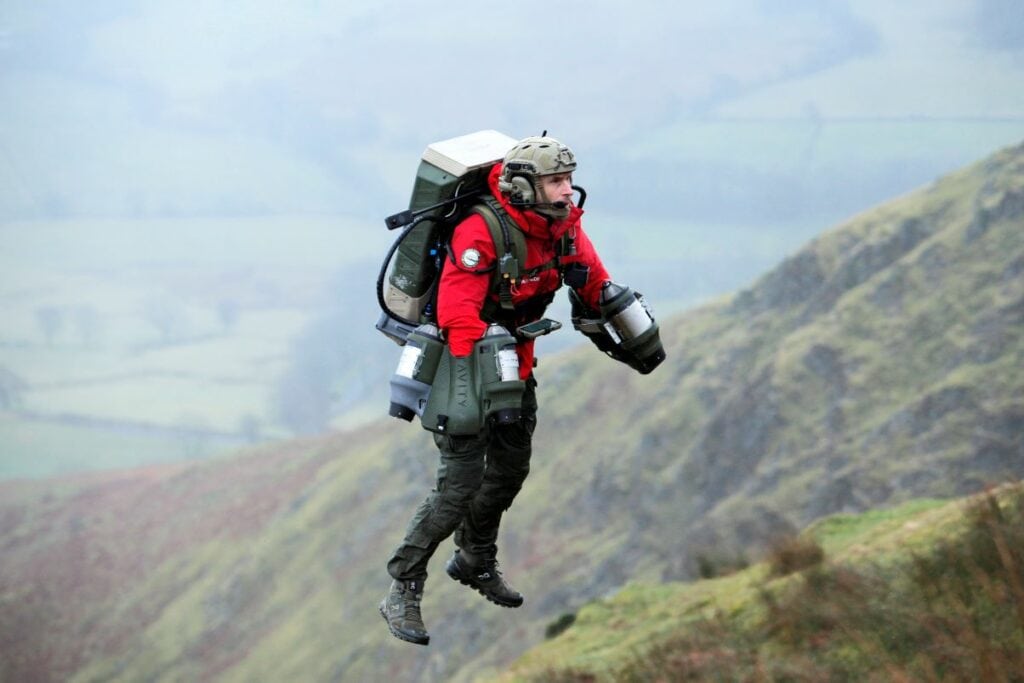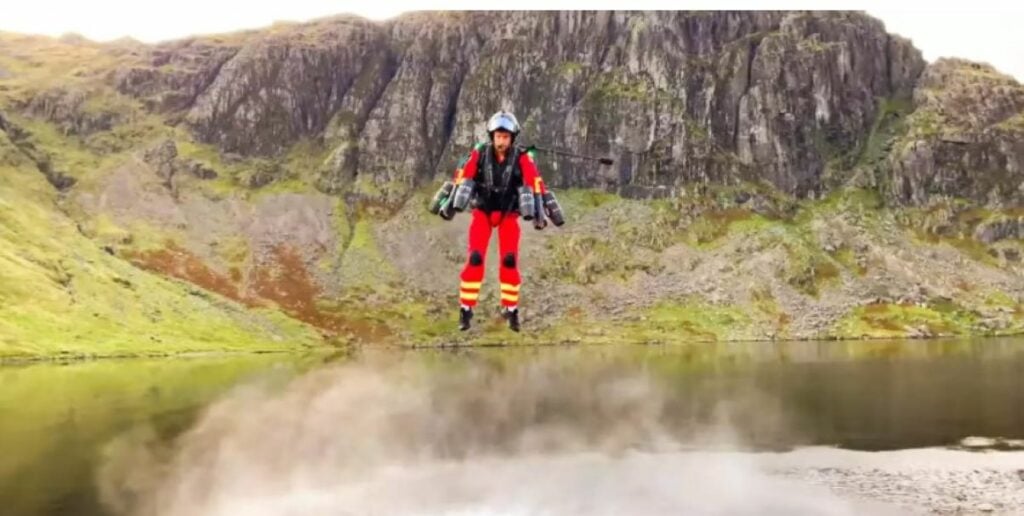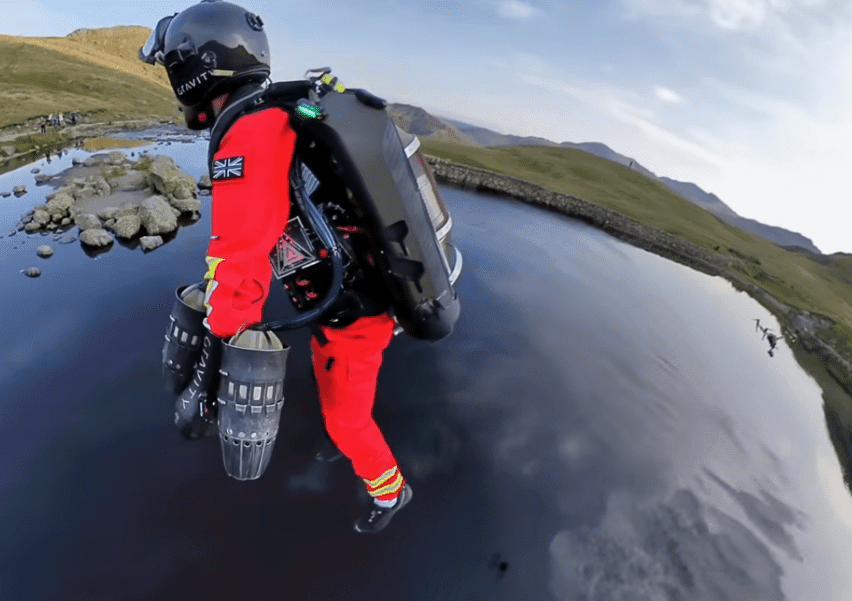
Is it a bird? Is it a plane? No – it’s a paramedic in a jet suit.
It’s the stuff science fiction films were once made of – rocket-powered superheroes flying to the rescue in the far-off 21st century.
But as these stunning photographs show, the sight of a jet-suit paramedic – framed against a Lake District skyline – could be operational as early as this summer.
One trial alone in the Langdales has demonstrated how a 25-minute uphill trek on foot to an accident scene, was cut to just 90 seconds.
With an overground speed of just under 40mph, the kit and capabilities are undergoing ground-breaking trials which will continue in the months to come.
The Great North Air Ambulance Service has partnered with renewable offshore energy firm Ørsted, and Wiltshire-based Gravity Industries in the trials.
The initiative seeks to further health and safety offshore by improving the way emergency first responses are applied out at sea.
The Great North Air Ambulance Service’s journey toward a jet suit-enabled paramedic service started in 2020 and aims to train experienced air ambulance paramedics to use the suit to access patients in the Lake District.
At this early stage, the training has already enabled one paramedic to complete their first free flight, safely operating the jet suit unassisted, with more paramedics reaching this stage soon.
The next stage, this summer, will bring paramedics’ flight skills to a level where real operational experience can be assessed – and real assistance will arrive via jet suit paramedics in the Lake District.

The main areas of focus for the jet suit paramedic would be on-site triage and urgent casualty response that should drastically improve patient stability and survivability.
Andy Mawson, director of operations at GNAAS, said: “We think the jet suit paramedic will speed up the response to some hard to access patients in the Lake District, and allow us to reach more patients. But in order to know for sure, we are putting it to the test.

“The most recent trials in the area, held at the start of the month, were a great success and showed how far and how quickly the jet suit can reach otherwise inaccessible locations. Thanks to Ørsted, this incredible dream could become a reality.”
The suit is fully 3D-printed in polypropylene, resulting in a system with vastly greater capabilities.








